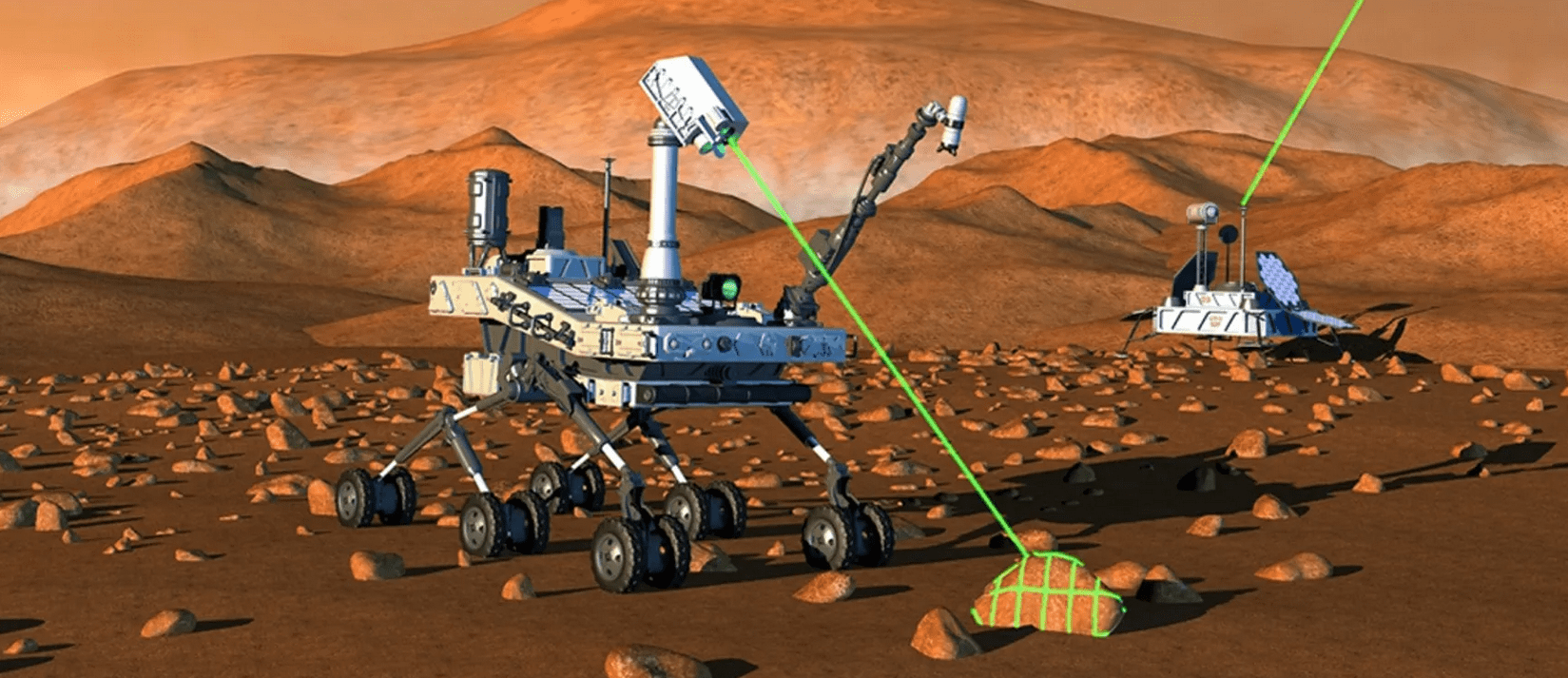Dante Lauretta serves as the Principal Investigator for NASA’s OSIRIS-REx sample-return mission to the asteroid Bennu. He also happens to design hard science board games, beginning with Xtronaut, a simple solar system exploration game. Then came Constellations, in which the players compete to build the most extensive and accurate image of the night sky.
Lauretta’s newest game, Downlink, is bigger, better, and more complex than his other offerings. The game takes over an hour to play and is for two to six players. It’s like a role-playing game for space exploration launches!
Downlink is a board and card game that uses dice to advance your missions, with various rockets and spacecraft, wonderfully illustrated by artist Guilhem Bedos. Each player is dealt a hand of cards that can be used to build rockets and payloads, and to put together an experienced ground team, along with some discovery goal cards. The game board consists of a map with travel paths to our inner and outer solar system. The goal of the Downlink is to score 30 points by launching and moving spacecraft, and reaching targets and using various science tools to make discoveries.
Downlink plays like real-world space science missions, with a variety of actual launch sites and accurate rockets to get your science experiments up into space. The gameplay is cooperative and competitive at the same time — I can use my resources to launch a rocket with an orbiter, after which other players can use their resource cubes and connect their own science instruments to my orbiter.

The game is unique in that it requires players to work together in the same way that we launch and conduct space science on a cooperative, international level. Resource cubes are strategically used to increase dice rolls and to “fund” missions. Each player has their own ground system base card, where they store their resource cubes and plan ground system capabilities that help increase the chances for successful launches and communications.
Each player has a hand of cards that can be used to build and get missions into space. Mission successes are gauged by how strong you develop your launch, spacecraft, and science team. There are cards that give extra dice rolls for team training, readiness tests, or having an experienced team. There is a gravity assist card that can get you where you’re going faster.
Let’s say you’re attempting to launch an Atlas rocket. The rocket cards have colored, circuit board-like graphics that represent connectors on the various science orbiters. Once you connect an orbiter to your rocket, you can link different science instruments to your orbiter, all of which are based on real tools.
There are a bunch of real-world rockets in the game, and they all launch from their corresponding launch sites. For example, if you have an Atlas V-401 rocket card, you launch from NASA’s Cape Canaveral Air Force Station in the U.S.; if you have a Soyuz rocket card, you launch form Baikonur Cosmodrome in Russia. There are six launch sites with a large and small rocket card for each.
Of course, the larger the rocket, the larger the payloads. The three payload science platform classes are orbiters, landers, and rovers, each with its own class of science tools that can be connected. Just like in the real world, attempting a rocket launch has three possible outcomes — successful launch, scrubbed launch, and catastrophic failure. With catastrophic failure, you sadly lose the rocket and all its payload.
The larger the orbiter, lander, or rover, the more experiments you can attach. You can even attach a lander or rover to the larger orbiters. There are also various science experiments you connect to different spacecraft. Orbiters can use lidar, charged particle detectors, radio science experiment, and radar. Rover instruments include a gamma ray spectrometer, microscope, magnetometer, UV spectrometer, and a visible/near infrared spectrometer. The landers can be equipped with the thermal spectrometer, alpha proton x-ray spectrometer, gas chromatagraph, and mass spectrometer.

Each science tool lets you discover the five different classes that score points. The discovery categories are astrobiology, atmospheric science, cosmochemistry, geophysics, and planetary geology. Players can discover things like polar ice caps, mantle dynamic, liquid water, massive storms, and lots of other things. Each attached experiment yields different results, and points are scored by launching rockets, moving your spacecraft, reaching a target object, downlinking data, and making a discovery.
It takes more than one space agency/nation to build science platforms and launch them off Earth to explore space. Downlink is well-thought-out and sets a fine example of how to use a game to teach real-world science. There’s a steep learning curve, but once you have a good understanding of all the cards and the dynamics of the game, it’s challenging and fun. I recommend picking it up for you next geeky science party.
AIPT Science is co-presented by AIPT and the New York City Skeptics.
Join the AIPT Patreon
Want to take our relationship to the next level? Become a patron today to gain access to exclusive perks, such as:
- ❌ Remove all ads on the website
- 💬 Join our Discord community, where we chat about the latest news and releases from everything we cover on AIPT
- 📗 Access to our monthly book club
- 📦 Get a physical trade paperback shipped to you every month
- 💥 And more!














You must be logged in to post a comment.